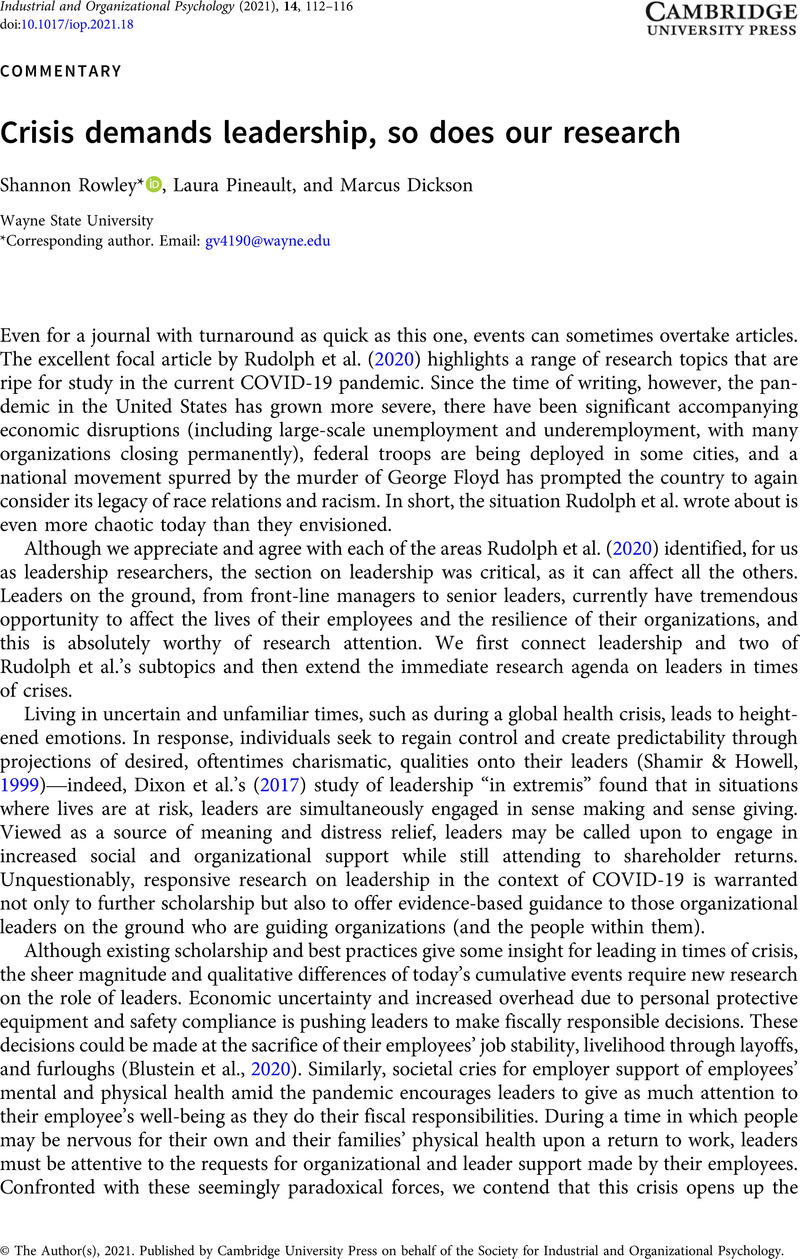Crossref Citations
This article has been cited by the following publications. This list is generated based on data provided by Crossref.
Miklian, Jason
and
Katsos, John
2024.
Ethical Leadership in Polycrisis Evidence from Leaders on How to Make More Peaceful, Sustainable, and Profitable Communities.
SSRN Electronic Journal,
Cobb, Haley R.
Thomas, Candice L.
Billeaud, Madeline L.
and
Rauvola, Rachel S.
2024.
Confronting the ideal worker myth to better support efforts towards gender equity: recommendations for a post-pandemic workforce.
Community, Work & Family,
p.
1.
Schowalter, Annika F.
and
Volmer, Judith
2024.
Servant and Crisis Manager? The Association of Servant Leadership with Followers’ Adaptivity and Proactivity.
Journal of Leadership & Organizational Studies,
Vol. 31,
Issue. 4,
p.
433.
Miklian, Jason
and
Katsos, John E.
2024.
Ethical Leadership in Conflict and Crisis.
Schowalter, Annika F.
and
Volmer, Judith
2025.
Trajectories and Associations of Perceived Servant Leadership and Teacher Exhaustion During the First Months of a Crisis.
Occupational Health Science,
Vol. 9,
Issue. 1,
p.
57.



